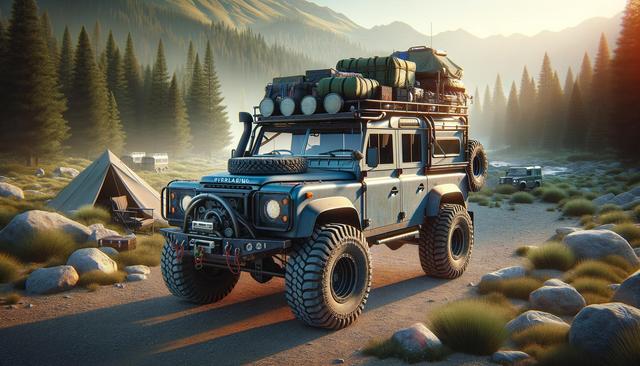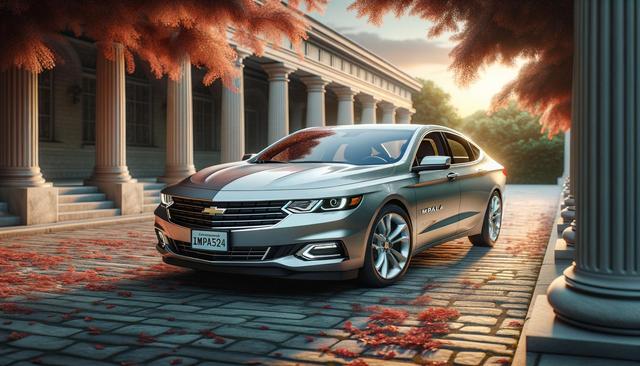What Defines an Overlanding Vehicle?
An overlanding vehicle is more than just a means of transportation; it’s a mobile basecamp designed for extended travel through rugged and often uncharted areas. These vehicles are typically built or modified to handle off-road challenges while providing the comfort and resources needed for self-reliant living. Overlanding vehicles can range from trucks and SUVs to vans and even motorcycles, as long as they meet the core requirements of durability, off-road capability, and cargo capacity.
Common features include:
- Four-wheel drive or all-wheel drive systems for better traction.
- High ground clearance to navigate obstacles such as rocks and water crossings.
- Reinforced suspension systems to handle rough terrain.
- Large fuel and water storage to support long journeys away from civilization.
These vehicles are often equipped with additional gear like roof tents, solar panels, winches, and portable kitchens to increase independence and comfort during travel.
Key Components of a Capable Overland SUV
The overland SUV is a popular choice due to its balance of size, power, and versatility. To transform a standard SUV into a reliable overlanding vehicle, several upgrades and modifications are typically required. The process begins with ensuring the vehicle can handle off-road conditions safely and reliably. Tires are among the first upgrades, with all-terrain or mud-terrain variants being the most common choices. These are better suited for dealing with dirt, gravel, mud, and snow.
Other essential modifications include:
- Skid plates to protect the vehicle’s undercarriage.
- LED light bars for night driving in remote areas.
- Snorkels for water crossings and dusty environments.
- Roof racks or cargo systems for storing gear efficiently.
Each of these components plays a role in enhancing the SUV’s ability to carry occupants and gear through challenging environments while maintaining safety and reliability.
Self-Sufficiency and Gear for Long-Distance Travel
One defining aspect of overlanding is its emphasis on self-reliance. Travelers often spend days or weeks away from traditional infrastructure, making it essential to carry all necessary supplies and equipment. An overlanding vehicle must be able to support cooking, sleeping, and even basic maintenance without external help. This requires thoughtful planning and the right gear.
A well-equipped overlanding setup often includes:
- Portable fridges or coolers for food storage.
- Water filtration systems or large water containers.
- Dual-battery systems or solar panels for power.
- Recovery gear like traction boards, jacks, and tow straps.
These tools ensure that travelers can address unexpected challenges and remain self-sufficient, even in the middle of nowhere. The goal is to maximize independence while maintaining comfort on the road.
Choosing the Right Vehicle for Your Overlanding Adventures
Not all vehicles are created equal when it comes to overlanding. Selecting the right one depends on the type of terrain you plan to explore, the duration of your trips, and your personal preferences. While some might opt for a compact SUV for its maneuverability, others may choose a larger truck or van for its cargo space and additional comfort features.
Key considerations when choosing an overlanding vehicle include:
- Payload capacity – to carry gear, water, and fuel.
- Fuel efficiency – important for long journeys.
- Reliability – especially in remote areas where repairs are challenging.
- Aftermarket support – availability of parts and upgrade options.
It’s also worth considering how easy it is to perform routine maintenance or repairs on the vehicle, especially if you plan to travel in areas without access to service centers.
Preparing for Your First Overlanding Journey
Entering the world of overlanding can be exciting, but preparation is key to a successful and enjoyable experience. Before setting off, new overlanders should take time to plan their route, test their vehicle and gear, and understand the challenges of remote travel. It’s not just about having the right vehicle—it’s about knowing how to use it effectively and safely.
Suggested steps include:
- Start with shorter trips to gain experience.
- Join overlanding communities or forums for advice and tips.
- Take basic off-road driving and vehicle recovery courses.
- Pack conservatively but thoroughly, prioritizing essentials.
Preparation also involves mental readiness. Overlanding often involves adapting to unexpected situations, from weather changes to mechanical issues. With the right mindset and preparation, it becomes a rewarding way to explore the world on your own terms.
Conclusion: Is Overlanding Right for You?
Overlanding offers a unique blend of adventure, exploration, and self-reliance. With the right vehicle and proper preparation, it opens up opportunities to experience the world beyond paved roads and crowded tourist destinations. Whether you’re drawn to the freedom of remote travel or the challenge of building a capable overland SUV, this lifestyle has something to offer anyone with a sense of curiosity and a love for the outdoors. It’s not just a way to travel—it’s a mindset and a journey all its own.


